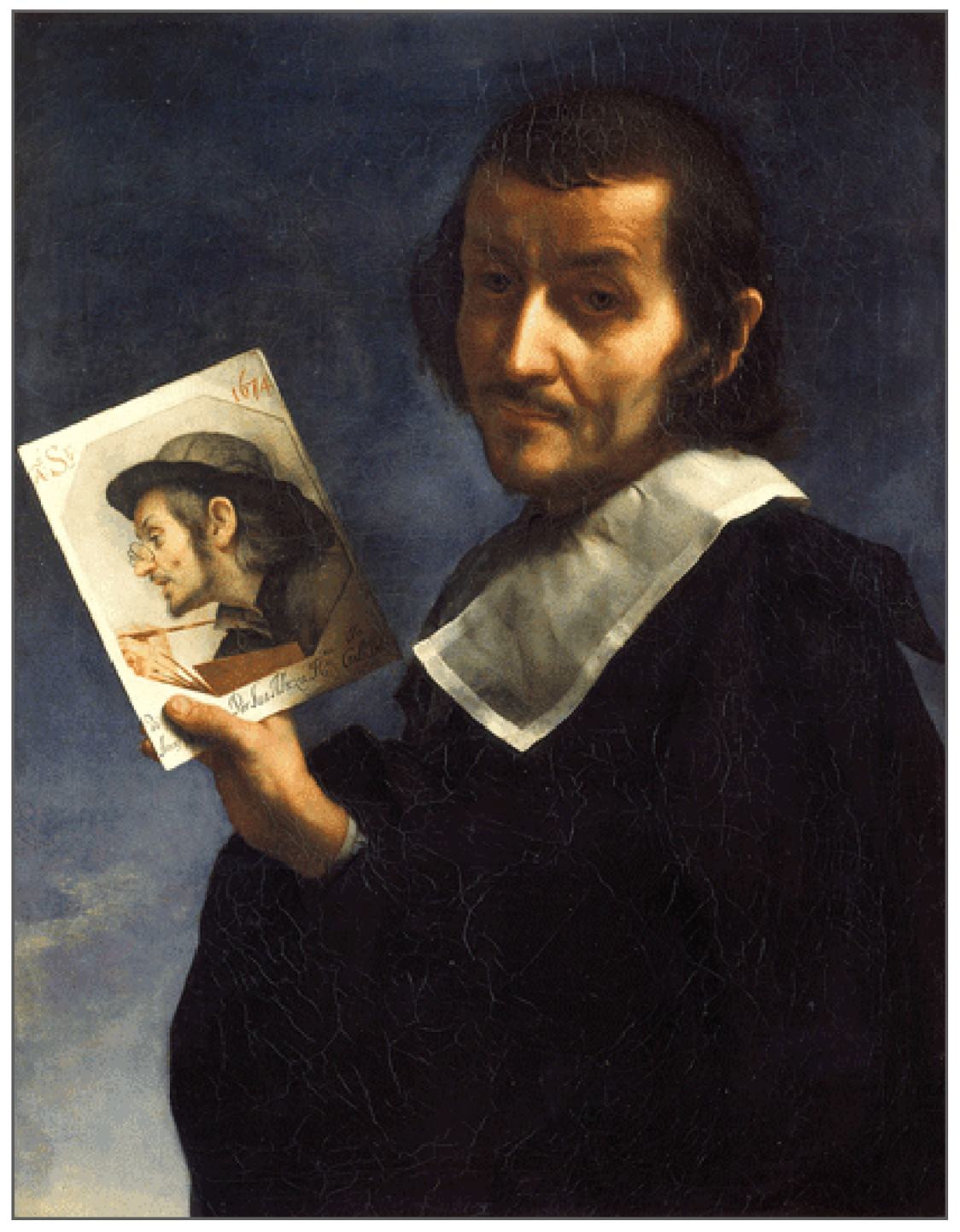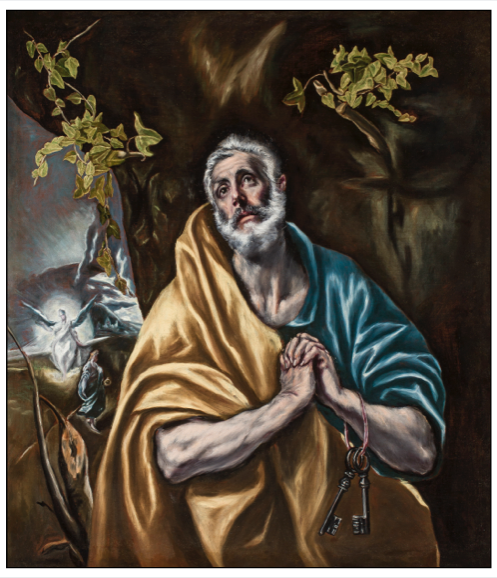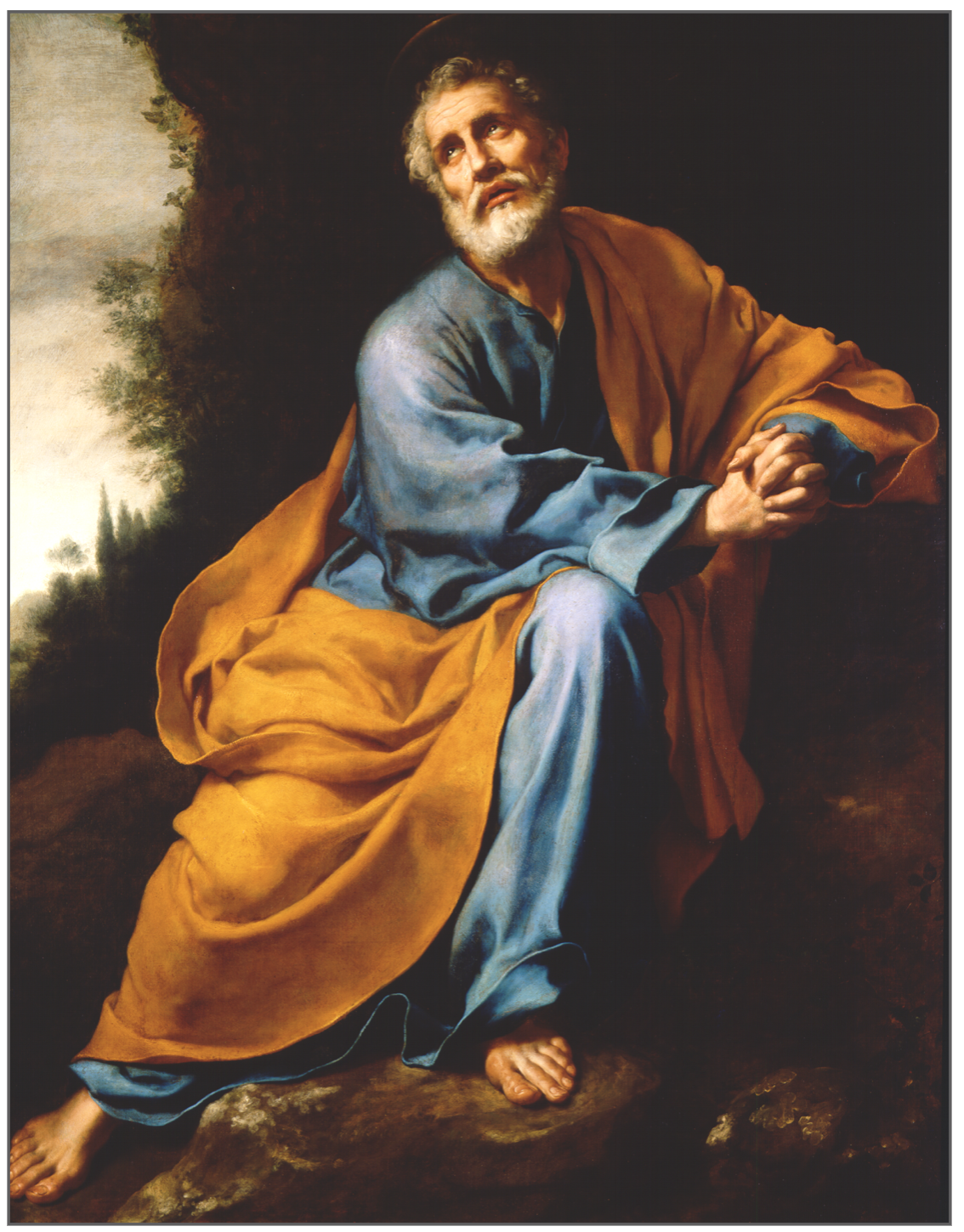Object of the Month: November 2018
The Repentant St. Peter
Oil on canvas, circa 1664
Carlo Dolci
Florentine, 1616-1686
This powerful portrait of the penitent Peter is by seventeenth-century Florentine artist Carlo Dolci. A child prodigy, Carlo entered Jacopo Vignali’s studio as an apprentice at the age of 9 and by 13 was independently completing noteworthy commissions. Throughout his lifetime Dolci’s paintings would continue to garner praise and to attract the patronage of luminaries like the Grand Duchess of Tuscany Vittoria della Rovere and her son Cosimo III.
However, Dolci’s aspirations went beyond a desire for fame. His lifelong friend and biographer Filippo Baldinucci wrote: “From early childhood, Dolci frequented the Benedictine Order, and his devotion ever increasing, he made a firm vow never in all his life to wish to paint anything other than sacred images or religious stories, and to represent them in such a manner that they would inspire Christian piety in those who saw them.” It is not surprising, therefore, that aside from a few portraits, Dolci’s entire oeuvre is comprised of devotional works.
 One of those rare portraits is this 1674 Double Self-Portrait. This work not only highlights the artist’s technical skill but also insinuates his temperament. Dolci was a meticulous artist. Baldinucci commented: “It may seem strange to hear that he completed so many works, having worked so slowly, or more accurately having taken so long to complete them, since sometimes a single foot occupied him for weeks.” We see that obsessive attention to detail in this work—both in its execution and in the handling of the subject. In a sense it is a visual pun. In the miniature portrait we see the bespectacled Dolci leaning in to delicately apply brush to canvas while the larger, central figure holds this miniature up for viewer examination. Notice the wistful expression of the dominant Dolci. It’s as if he is inquiring of the viewer, “I’m not sure I’m satisfied with my ‘image.’ Are you?” Numerous sources site that throughout his life Dolci suffered from melancholia, an archaic term describing (among other things) bouts of extreme depression. Perhaps this malady contributed to his ability to render powerful emotion convincingly. Regardless, it is this quality that evokes the pathos readily apparent in the Museum & Gallery’s portrait.
One of those rare portraits is this 1674 Double Self-Portrait. This work not only highlights the artist’s technical skill but also insinuates his temperament. Dolci was a meticulous artist. Baldinucci commented: “It may seem strange to hear that he completed so many works, having worked so slowly, or more accurately having taken so long to complete them, since sometimes a single foot occupied him for weeks.” We see that obsessive attention to detail in this work—both in its execution and in the handling of the subject. In a sense it is a visual pun. In the miniature portrait we see the bespectacled Dolci leaning in to delicately apply brush to canvas while the larger, central figure holds this miniature up for viewer examination. Notice the wistful expression of the dominant Dolci. It’s as if he is inquiring of the viewer, “I’m not sure I’m satisfied with my ‘image.’ Are you?” Numerous sources site that throughout his life Dolci suffered from melancholia, an archaic term describing (among other things) bouts of extreme depression. Perhaps this malady contributed to his ability to render powerful emotion convincingly. Regardless, it is this quality that evokes the pathos readily apparent in the Museum & Gallery’s portrait.
Although the subject of this work is derived from the gospels, it’s popularity during Dolci’s time was due in part to Counter-Reformation dogma. For example, one of the many objectives of the Council of Trent was to urge Catholic painters to reaffirm through art the salvatory function of those sacraments dismissed by the Reformers—including the sacrament of penance (the private confession of sins to a priest). Art historian and curator David Steel notes that as a result “the repentance of Peter became an especially popular subject since it depicted the Prince of Apostles, and the first pope, in the sacramental act of doing penance; Peter’s tears became a symbol for that sacrament.”
 The compositional details mirrored in Dolci’s work were first codified by the Mannerist painter Domenikos Theotokopoulos, called El Greco. El Greco completed numerous variants and at least five autograph versions of this subject, including the one pictured here from the San Diego Museum of Art. His dark background, grotto-like setting, and figural pose became standard, and we see these elements mirrored in Dolci’s rendering. Both artists also clothe the figure in his traditional yellow-gold mantel of faith. However, Dolci’s elegant brushwork and jewel-like coloration add what one historian describes as a “fresh, objective approach.”
The compositional details mirrored in Dolci’s work were first codified by the Mannerist painter Domenikos Theotokopoulos, called El Greco. El Greco completed numerous variants and at least five autograph versions of this subject, including the one pictured here from the San Diego Museum of Art. His dark background, grotto-like setting, and figural pose became standard, and we see these elements mirrored in Dolci’s rendering. Both artists also clothe the figure in his traditional yellow-gold mantel of faith. However, Dolci’s elegant brushwork and jewel-like coloration add what one historian describes as a “fresh, objective approach.”
Although naturalistic in the handling of light and the depiction of Peter’s weathered face, red-rimmed eyes, and tousled hair and beard, there is none of the severity characteristic of such Baroque naturalists as Caravaggio. Dolci’s vital realism seems free of despair. As art historian Michael Bryan observed, “Nothing is harsh or obtrusive, all is modest and harmonious.” This seamless integration of the natural and the sublime creates a wonderfully moving image.
To learn how Protestant painters sought to affirm their faith read about Lucas Cranach, the Younger’s Allegory of the Fall and Redemption of Man.
Donnalynn Hess, Director of Education
Published in 2018
